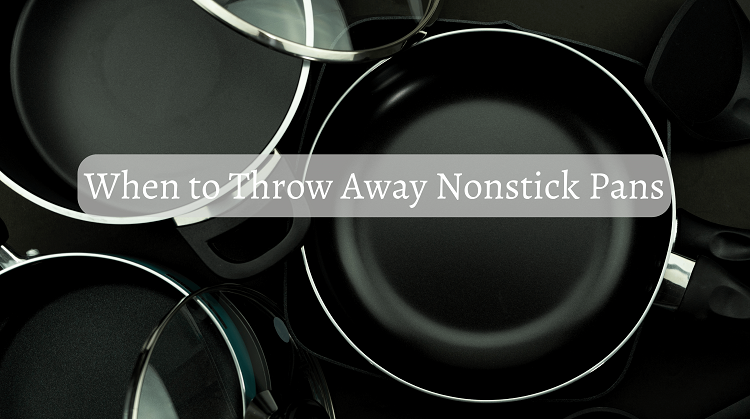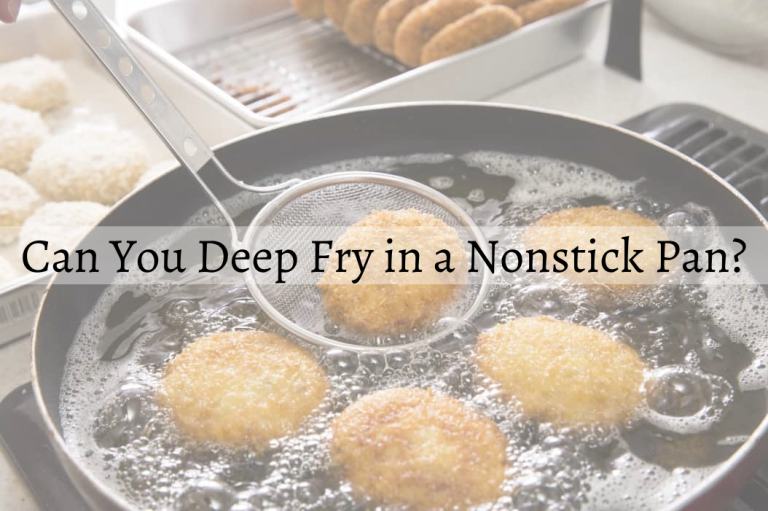Can a Nonstick Pan Go in the Oven? The Definitive Guide
Like most people, you probably have a nonstick pan or two in your kitchen. Nonstick pans have been popular for decades because they do cooking and cleaning a breeze. But if you’re not careful, you can easily damage your nonstick pan, especially if you put it in the oven. Let me answer the question, “Can a nonstick pan go in the oven?” and provide a step-by-step guide to help you use your nonstick pan safely.
Can a Nonstick Pan Go in the Oven?
Yes, nonstick pans can generally go in the oven, but the maximum temperature may vary depending on the brand and type of nonstick coating.
For instance, Tramontina and Calphalon nonstick pans can go in the oven up to 350°F and 500°F, respectively, while some sources recommend not exceeding 450°F for Calphalon pans to be on the safe side.
However, it’s worth noting that some sources recommend keeping nonstick pans out of the oven if you want the coating to last longer.
Nonstick coatings are not suitable for high-heat cooking like grilling, as the coating can begin to peel away at high temperatures. The temperature setting for cooking in nonstick pans can vary depending on the stove and burner size, but generally, medium heat is recommended for cooking with nonstick pans.

It’s also important to note that proper seasoning and care can help maintain the pan’s nonstick properties and prevent sticking. If a nonstick pan is scratched or beginning to shed its coating, it’s recommended to dispose of it to avoid any potential health concerns.
Why Nonstick Pans are Popular?
Nonstick pans have a surface coated with a nonstick material like Teflon. This coating makes cooking food easy without sticking to the pan.
Nonstick pans also require less oil or butter, making them a healthier cooking option. Additionally, they are generally easier to clean than other types of pans.
The Problem with Nonstick Pans in the Oven
While nonstick pans are great for cooking on the stovetop, they can be problematic in the oven. The problem is that the nonstick coating can break down at high temperatures, releasing toxic fumes. These fumes can be harmful to both humans and pets.
How to Know If Your Nonstick Pan Is Oven-safe?
Before you put your nonstick pan in the oven, you need to make sure it is oven-safe. Most nonstick pans are not safe for use in the oven, but some are. Check the manufacturer’s instructions to find out if your nonstick pan is oven-safe.
If the instructions say that the pan is oven-safe, then you can use it in the oven. If the instructions do not mention oven safety, then it is best to assume that the pan is unsafe.
What Temperature Can Nonstick Pans Handle?
If your nonstick pan is oven-safe, the next thing you need to know is what temperature it can handle. Nonstick pans can generally handle temperatures up to 450 degrees Fahrenheit.
However, it is best to check the manufacturer’s instructions. If you exceed the recommended temperature, the nonstick coating can break down, releasing toxic fumes.
What to Do If your Nonstick Pan is Not Oven-Safe?
If your nonstick pan is not oven-safe, you can do a few things. First, transfer the food to an oven-safe dish before putting it in the oven. Alternatively, you can use a different pan, such as a cast iron pan that is safe for the oven.
How to Use Nonstick Pans Safely in the Oven
If your nonstick pan is oven-safe, you can use it in the oven safely by following these steps.
- Preheat the oven to the desired temperature.
- Place the nonstick pan in the oven.
- Set a timer for the desired cooking time.
- Remove the pan from the oven using oven mitts when the food is done.
- Allow the pan to cool before cleaning it.
How to care for a nonstick pan?
Here are useful tips for caring for your nonstick pans.
- Hand wash your nonstick pans in hot soapy water, rinse well, and dry completely before storing. Use a plastic scrub, sponge, or dishcloth to wash the pans. Never use scrubbers that have built-in harsh cleansers or detergents.
- Clean your nonstick pan shortly after cooking while it’s cool to the touch. Use mild dish soap and a soft cloth or sponge to clean nonstick pans. Avoid using abrasive tools such as steel wool, scouring pads, or stiff scrubbing brushes, which can damage the surface.
- Use a paste of equal parts baking soda and water to gently scrub the pan, using a non-metallic sponge or brush. Rinse well and dry. Repair the surface by pouring a small amount of vegetable oil into the pan, rubbing it into the pan, and wiping off any excess with a paper towel.
- Use a soft dishrag or non-abrasive sponge to clean the cookware with dish detergent and warm water. Avoid using abrasive cleansers, steel wool, or other rough cleaning surfaces.
- Do not use cooking sprays on nonstick pans. Instead, lightly grease the pan’s surface with oil before heating over medium heat for a few minutes. Let it cool, wash with mild detergent, and rinse clean.
- Never store metal utensils or anything rough between nested nonstick pans, which could produce scuffs and scratches. Consider hooks, a pegboard, pan organizers, or open shelving, perhaps with cloth napkins, paper towels, or pan protectors between the pans to preserve their nonstick coating.
By following these tips, you can ensure that your nonstick pans last for years and continue performing at their best.
Final Words
So, nonstick pans can go in the oven but with some important considerations. It is crucial to check the manufacturer’s guidelines and look for the oven-safe symbol on the pan before using it in the oven. While some nonstick pans are oven-safe up to 500°F, others have a lower temperature limit of 350°F, and some may not be safe for oven use due to plastic handles or grips. It’s essential to avoid sudden temperature changes that can cause the pan to warp or break and release harmful toxins. With proper care and attention, nonstick pans can be a valuable tool for home cooks, reducing the need for excess butter and oil and making cleanup a breeze.
Frequently Asked Questions (FAQs)
What is the maximum temperature that nonstick pans can handle in the oven?
It depends on the type of nonstick coating. Ceramic nonstick pans can withstand temperatures up to 500°F, while those with PTFE or Teflon coatings are usually unsuitable for temperatures above 350°F.
Can nonstick pans with plastic handles go in the oven?
Nonstick pans with plastic handles cannot go in the oven. Plastic handles cannot withstand high temperatures and may melt or deform.
How do I know if my nonstick pan is safe for the oven?
Check the label, packaging, or manufacturer’s website for an oven-safe symbol on the pan. If no information is available, assume that the pan is unsafe for the oven.

Hello, I’m Benny Jensen – a kitchen expert specializing in daily used utensils. With more than a decade of professional experience, I’m excited to share my expertise to make your life easier, smarter, and more comfortable. Let’s uncover the magic of well-crafted utensils together and make your time in the kitchen efficient and delightful!







